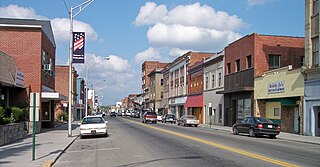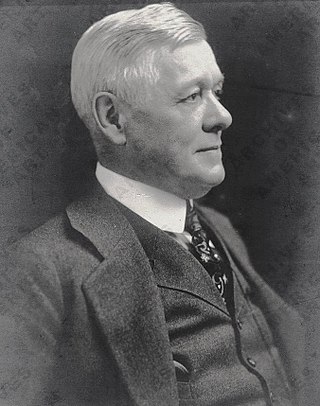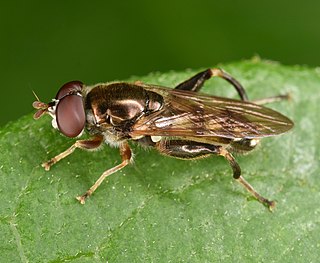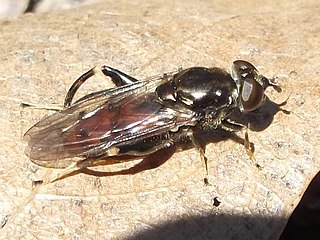
Princeton University is a private Ivy League research university in Princeton, New Jersey, United States. Founded in 1746 in Elizabeth as the College of New Jersey, Princeton is the fourth-oldest institution of higher education in the United States and one of the nine colonial colleges chartered before the American Revolution. The institution moved to Newark in 1747 and then to its Mercer County campus in Princeton nine years later. It officially became a university in 1896 and was subsequently renamed Princeton University.

Princeton is a city in and the county seat of Mercer County, West Virginia, United States. The population was 5,872 at the 2020 census. It is part of the Bluefield micropolitan area. The city hosts the Princeton WhistlePigs baseball club of the Appalachian League.

The Douglas B-18 Bolo is an American twin-engined heavy bomber which served with the United States Army Air Corps and the Royal Canadian Air Force during the late 1930s and early 1940s. The Bolo was developed by the Douglas Aircraft Company from their DC-2 as a replacement for the Martin B-10.

The American Philosophical Society (APS) is an American scholarly organization and learned society founded in 1743 in Philadelphia that promotes knowledge in the humanities and natural sciences through research, professional meetings, publications, library resources, and community outreach. It was founded by the polymath Benjamin Franklin and is considered the first learned society founded in what became the United States.
Leonard Joseph Victor Compagno (1943-2024) was an international authority on shark taxonomy and the author of many scientific papers and books on the subject, best known of which is his 1984 catalogue of shark species produced for the Food and Agriculture Organization (FAO) of the United Nations. Compagno was mentioned in the credits of the 1975 film Jaws along with the National Geographic Society.

John Massey Rhind was a Scottish-American sculptor. Among Rhind's better known works is the marble statue of Dr. Crawford W. Long located in the National Statuary Hall Collection in Washington D.C. (1926).
Tora Lian-Juin Harris is an American high jumper. He is a Princeton University engineer of Taiwanese and African-American descent. Harris is an Olympian, a four-time national champion and two-time bronze medalist in international competition. He represented Team USA twice in the IAAF World Championships in Athletics, three times in the IAAF World Indoor Championships in Athletics and has served as a representative once in the IAAF Continental Cup. He spent two years as the No. 1 ranked high jumper in the United States.

The Princeton Battle Monument is located in Princeton, New Jersey, adjacent to Morven and Princeton's borough hall. The monument commemorates the January 3, 1777 Battle of Princeton and depicts General George Washington leading his troops to victory and the death of General Hugh Mercer. It stands 50 feet (15 m) tall and was inspired by carvings on the Arc de Triomphe in Paris. Designed to visually anchor the western end of Nassau Street, the monument and its park are a legacy of the City Beautiful movement.

The Princeton Battlefield in Princeton, Mercer County, New Jersey, United States, is where American and British troops fought each other on January 3, 1777, in the Battle of Princeton during the American Revolutionary War. The battle ended when the British soldiers in Nassau Hall surrendered. This success, following those at the Battle of Trenton on December 26, 1776, and the Battle of the Assunpink Creek the day before, helped improve American morale.
Louis Dupree was an American archaeologist, anthropologist, and scholar of Afghan culture and history. He was the husband of Nancy Hatch Dupree, who was the Board Director of the Afghanistan Center at Kabul University in Afghanistan and the author of five books about Afghanistan. The husband and wife team from the United States worked together for 15 years in Kabul, collecting as many works written about Afghanistan as they could. They travelled across the country from 1962 until the 1979 Soviet intervention, conducting archaeological excavations.

Pterallastes is a genus of bee-mimicking hoverflies. So far the genus contains only four species, one in North America, one from Japan, and two from China.

Chalcosyrphus (Xylotomima) metallicus, the Yellow-legged Leafwalker, is an uncommon species of syrphid fly observed in the southeastern United States. Hoverflies are able to remain nearly motionless while in flight. The adults are also known as flower flies for they are commonly found around and on flowers, from which they get both energy-giving nectar and protein-rich pollen.

Chalcosyrphus (Xylotomima) metallifer , the Orange-horned Leafwalker, is a rare species of syrphid fly observed in the Eastern United States. Hoverflies can remain nearly motionless in flight. The adults are also known as flower flies for they are commonly found on flowers, from which they get both energy-giving nectar and protein-rich pollen.

Chalcosyrphus (Xylotomima) libo, the Long-haired Leafwalker, is an uncommon species of syrphid fly observed in north-central North America. Hoverflies are able to remain nearly motionless in flight. The adults are also known as flower flies for they are commonly found around and on flowers, from which they get both energy-giving nectar and protein-rich pollen.
Tropidia pygmaea is a species of hoverfly in the family Syrphidae.
Chalcosyrphus (Xylotomima) sacawajeae, the Hairy-winged Leafwalker, is a rare species of syrphid fly observed in the Northern United States and Western Canada. Hoverflies can remain nearly motionless while in flight. The adults are also known as flower flies for they are commonly found on flowers, from which they get both energy-giving nectar and protein-rich pollen.
Chalcosyrphus dubius is a species of syrphid fly in the family Syrphidae.
Chalcosyrphus parvus is a species of syrphid fly in the family Syrphidae.
Xylota analis is a species of hoverfly in the family Syrphidae.
Xylota argoi is a species of hoverfly in the family Syrphidae.











